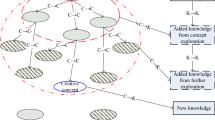Abstract
Online review data on e-commerce websites is one of the most important channels that reflect user demands and preferences. This work takes household aroma diffusers products as the study object, conducts text mining based on design knowledge hierarchy (DKH) to explore a user demand acquisition and analysis method to obtain the structural relationship among multiple demands then evaluate the importance, so as to help develop product improvement strategies and product design positions. Applying the method in this work, three design positions of household aroma diffusers are defined with the typical part option clusters, and a specific design is proposed.
Access this chapter
Tax calculation will be finalised at checkout
Purchases are for personal use only
Similar content being viewed by others
References
Chen, C-H.: Trends and research issues in customer-oriented product conceptualization. J. Des. Environ. 87–106 (2006)
Sun, H., Guo, W., Shao, H., Rong, B.: Dynamical mining of ever-changing user requirements: a product design and improvement perspective. Adv. Eng. Inform. 46, 101174 (2020). https://doi.org/10.1016/j.aei.2020.101174
Wang, W.M., Li, Z., Tian, Z.G., Wang, J.W., Cheng, M.N.: Extracting and summarizing affective features and responses from online product descriptions and reviews: a kansei text mining approach. Eng. Appl. Artif. Intell. 73, 149–162 (2018). https://doi.org/10.1016/j.engappai.2018.05.005
Zheng, L.: The classification of online consumer reviews: A systematic literature review and integrative framework. J. Bus. Res. 135, 226–251 (2021). https://doi.org/10.1016/j.jbusres.2021.06.038
Villeneuve, H., O’Brien, W.: Listen to the guests: text-mining Airbnb reviews to explore indoor environmental quality. Build. Environ. 169, 106555 (2020). https://doi.org/10.1016/j.buildenv.2019.106555
Zhou, J., Zhou, M.: Sentiment analysis of elderly wearable device users based on text mining. In: International Conference on Applied Human Factors and Ergonomics, pp. 360-5 (2021)
Gupta, V., Lehal, G.S.: A survey of text mining techniques and applications. J. Emer. Technol. Web Intel. 1, 60–76 (2009)
Wang, Y., Lu, X., Tan, Y.: Impact of product attributes on customer satisfaction: An analysis of online reviews for washing machines. Electron. Commer. Res. Appl. 29, 1–11 (2018). https://doi.org/10.1016/j.elerap.2018.03.003
Hu, F., Trivedi, R.H.: Mapping hotel brand positioning and competitive landscapes by text-mining user-generated content. Int. J. Hosp. Manag. 84, 102317 (2020). https://doi.org/10.1016/j.ijhm.2019.102317
Weiss, S.M.I.N., Zhang, T., Damerau, F.J.: Overview of Text Mining. Text Mining. Springer, New York, NY (2005)
Day, M., Lee, C.: Deep learning for financial sentiment analysis on finance news providers. In: 2016 IEEE/ACM International Conference on Advances in Social Networks Analysis and Mining (ASONAM), pp. 1127–34 (2016). https://doi.org/10.1109/ASONAM.2016.7752381
Yan, W., Chen, C.-H., Chang, W.: An investigation into sustainable product conceptualization using a design knowledge hierarchy and Hopfield network. Comput. Ind. Eng. 56, 1617–1626 (2009). https://doi.org/10.1016/j.cie.2008.10.015
Yan, W., Khoo, L.P., Chen, C.-H.: A QFD-enabled product conceptualisation approach via design knowledge hierarchy and RCE neural network. Knowl.-Based Syst. 18, 279–293 (2005). https://doi.org/10.1016/j.knosys.2004.09.001
Zhang, W.: Review data driven customer need model research based on product performance lexicon. China Mecha. Eng. 31, 1866–1876 (2020)
Author information
Authors and Affiliations
Corresponding author
Editor information
Editors and Affiliations
Rights and permissions
Copyright information
© 2022 The Author(s), under exclusive license to Springer Nature Switzerland AG
About this paper
Cite this paper
Chen, Z., Zhang, X., Zhu, X., Gu, Z. (2022). Research on Household Product Design Based on Design Knowledge Hierarchy and Text Mining—Taking Aroma Diffuser as an Example. In: Yamamoto, S., Mori, H. (eds) Human Interface and the Management of Information: Applications in Complex Technological Environments. HCII 2022. Lecture Notes in Computer Science, vol 13306. Springer, Cham. https://doi.org/10.1007/978-3-031-06509-5_1
Download citation
DOI: https://doi.org/10.1007/978-3-031-06509-5_1
Published:
Publisher Name: Springer, Cham
Print ISBN: 978-3-031-06508-8
Online ISBN: 978-3-031-06509-5
eBook Packages: Computer ScienceComputer Science (R0)




